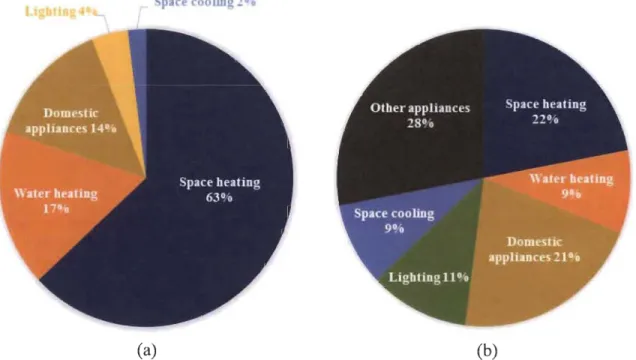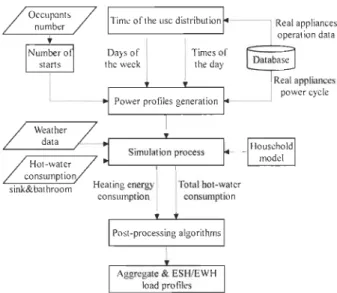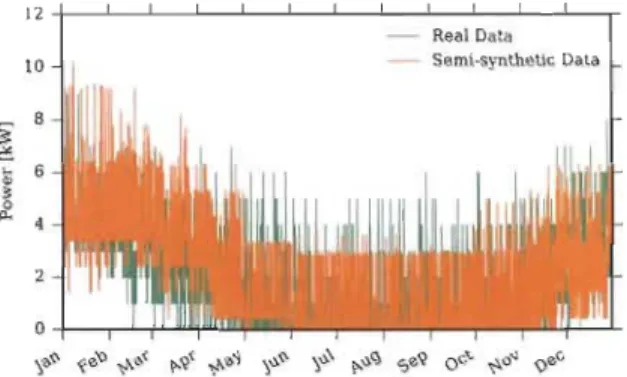SURVEILLANCE ET DIAGNOSTIC DE CHARGES
ÉLECTRIQUES RÉSIDENTIELLES
THÈSE PRÉSENTÉE
COMME EXIGENCE PARTIELLE DU
DOCTORAT EN GÉNIE ÉLECTRIQUE
PAR
SEYEDSAEID HOSSEINI
Université du Québec à Trois-Rivières
Service de la bibliothèque
Avertissement
L’auteur de ce mémoire ou de cette thèse a autorisé l’Université du Québec
à Trois-Rivières à diffuser, à des fins non lucratives, une copie de son
mémoire ou de sa thèse.
Cette diffusion n’entraîne pas une renonciation de la part de l’auteur à ses
droits de propriété intellectuelle, incluant le droit d’auteur, sur ce mémoire
ou cette thèse. Notamment, la reproduction ou la publication de la totalité
ou d’une partie importante de ce mémoire ou de cette thèse requiert son
autorisation.
DOCTORAT
EN GÉNIE ÉLECTRIQUE (Ph
.
D
.
)
Direction de recherche:
Dr
.
Kodjo
AGBOSSOU,
directeur de
recherche
Université
du Québec
à
Trois-Rivières
Dr. Sousso KELOUWANI,
codirecteur
de
recherche
Université
du Québec
à
Trois-Rivières
Jury d'évaluation:
Dr. Messaoud Ahmed OUAMEUR,
président
du jury Université du Québec
à
Trois-Rivières
Dr.
Lyne
WOODWARD
,
évaluateur externe
École
de Technologie Supérieure
ÉTS
Dr. Houshang KARIMI,
évaluateur externe
Polytechnique Montréal
Smart grid is the key enabler of the main conceptual framework for Smart Home
(SH)
concept. The emergence of SH yields Home Energy Management Systems
(HEMS)
to
enhance residential energy solutions
.
HEMS are capable of creating an
automation
network to
provide many energy saving applications and
customer comfort facilitation through Appliance
Load Monitoring and
Diagnosis (ALMD) technologies. ALMD enables load decomposition
at the appliance level. An appliance-Ievel analysis
can bene fit both customers and utilities by
improving energy efficiency and subsequently
reducing the electricity cost.
The ALMD
system
accounts for two main procedures of load identification and fauIt
detection that lie at the root of this study. The former is offered by load monitoring phase.
This phase can be executed by use of intrusive and non-intrusive methods. Nevertheless,
due to different issues related to the first technique, the non-intrusive mechanism has been
promoted. On the other side,
the
l
atter is realized through anomal y detection manners. These
manners exploit the results of
lo
ad
monitoring
step to detect any deviation in appliances'
normal behavior. Consequently, the anomalous appliances are analyzed to be diagnosed in
terms of either faulty or abnormal.
Accordingly, this essay commences with the first phase, in the context of Non-intrusive
Load Monitoring (NILM). NILM entails essential prerequisites in order to realize a fruitful
structure
.
These essentials generally vary based on customer's choice of appliances, their
electrical characteristics, and environ mental conditions. For example, in Quebec, Canada,
where this study is conducted, the Electric Space Heaters (ESH) and Electric Water Heaters
(EWH) explain a significant share of
household
electricity consumption.
As
a
worldwide
uncommon
case,
this
can
bring
about
particular case
studies of
NILM. Therefore, the
in-vestigation
into the prerequisite necessities that
can
notably
affect
the feasibility
of a
load
recognition process through NILM techniques
should
be highly
concerned.
In
accordance
with
this matter,
an extensive
discussion is provided that
subsequently
results
in
practical
suggestions
with regard to NILM's
essential
necessities. Furthermore, this
analysis yields a
serni-synthetic
data
generation approach
that is proposed to
assist with
the demonstration
of
the
importance of
NILM's prerequisites. Particularly, the
creation of this tool
is motivated by
the
lack of
appropriate
data
for Appliance
Load Monitoring
(ALM) studies
in
regions
like
Quebec
.
The
statistical
modeling methods
and whole
building
energy simulators are employed
to develop the data
generation
too!. The results demonstrate the
capability
of the developed
tool to
generate
useful
electricity consumption
data
for
ALM researches.
According
to NILM analytical process
of
load identification, many machine learning
algorithms
have been utilized. Generally, the choice of
algorithms
has been made based on
important features
related to targeted
appliances and available
information. However, the
diagnosis
capability
is another element that
should
be
considered
in the method candidate due
to
the
fact
that the
eventual ambition of an
ALMD is not
only
load
recognition. In addition,
the
chosen algorithms
have mainly
considered a
time-invariant modeling
structure
that utilizes
the
static
information of underlying databases to
construct
the models through
exhaustive
off-line
training phases. These
restrictions
have motivated this
research study
to intend
an
appliance-Ievelload
modeling
system
in
order
to
en able
the diagnosis
capacity of
NILM. From
this perspective,
a framework
is
suggested
that is
capable of capturing
the dynarnic nature
.
of
power
consumption
by
exploiting
individual hou
ses
data. The
suggested framework ai
ms
at a
time-variant load modeling
system
by developing
an adaptable
on-line learning mechanism
that
is formulated
in the
context
of
an
unsupervised machine learning method. Accordingly,
this dissertation proposes the
approach
of
adaptive
on-line unsupervised household database
construction
of
energy-intensive appliances
to provide real-time
appliance-Ievel
information
and
manipulate high-energy demands. This
approach considers
the
specific
case of Quebec
by
analyzing
the data
of
EWH. The
results
demonstrate that the proposed data
construction
The diagnosis of anomalous appliances is
another
important application of household
ALMD
systems.
Anomaly detection is an inevitable
step
towards decision making on the type
of irregular eJectricity consumption. NevertheJess, this phase, particularly in the context of
NILM has not been fairly taken into consideration. In fact, due to the tedious task of Joad
disaggregation, the
state-of-art
NILM techniques are inadequate to enable effective anomaly
detection
services at
the aggregate-level. Therefore
,
this argumentation recommends the
idea of operation-time
anomaly
detection by providing an in-depth analysis of the nature of
anomaly in household
energy-intensive
appliances
as
well as energy consumption behavior of
a
set
of devices candidate. Such an extensive investigation
assists
with the development of
efficient anomaly detection methods based on
general
electrical features of loads applicant.
As a result
,
an on-li ne
appliance-level
anomaly detection
system
is proposed that is capable
of continuously monitoring of
energy
consumption and providing in-operation information
for diagnosis algorithms. This
suggestion
is further bolstered by improvements in
cost-efficient
smart
plugs' technology. The results, obtained from actual
experimentation
on
several
case
studies
demonstrate that the proposed approach, performed by a
set
of
straightforward
techniques has
a
robust
structure.
Important remarks
are
elaborated within this
study
that can
assist with future ambitions of aggregate-level anomaly detection
.
1
would
like to
express
my
sincere gratitude
to my
research supervisor,
Professor Kodjo
Agbossou
,
the
faculty
member
of
Department
of
Electrical
and
Computer Engineering of
UQTR
for
his invaluable research
support,
outstanding
advice,
patience,
and
motivation
.
He
taught me how to
conduct scientific
research, how to present
a scientific study, and
how to
write a
sc
ientific manuscript. His
endless guidance and
immense knowledge helped me in
all
the time of my
research studies.
1
wou
Id
also
like to
extent
thanks to my
research advisor,
Professor Sousso Kelouwani, the
faculty
member of Department of Mechanical Engineering
of UQTR
for
his
continuous
help,
cooperation, and
inspiration. His
professional support
and
precious
scientific
knowledge have made
a
deep impression
on
me. His dedication to
providing high-quality
research credits
him with
an excellent scientist ex ample
to follow
and
goal
to
strive
to
.
1
am
deeply indebted to Professor Alben Cardenas, the
faculty
member
of
Department of Electrical
and
Computer Engineering of UQTR
for
his
endless research support
and academic advice.
His
extensive
personal
supports and
professional
inputs shall always
be
remembered.
1
am also grateful
to be
associated with
Dr. Nilson Henao
for
his
continuous
encouragement
during
all
my
studies.
1
am
truly thankful
for financial
s
upport
and assistance
of
Hydro Quebec's Laboratory
of Energy
Technologies
(LTE),
The Natural Sciences
and
Engineering Research Council
of
Canada
(NSERC),
The Hydrogen Research Institute
(IRH),
and
The UQTR
's
Foundation. This
study
might have never
come
to life without
them.
Last but not least, 1 owe
a
huge debt of
gratitude
to my
family, my father,
Harnid
and
my
mother
,
Masoomeh
,
and
my
friends for
their
spiritual support,
immense love,
and
patience.
Abstract
Acknowledgment
Contents
List of Figures
List of Tables
List of Acronyms
Chapter 1 - Introduction
1.1
General context
1.2
Motivation...
1.3
Appliance-level
monitoring .
1.4
Problem statement
.
. . . .
1.4.1
The proficiency of database
1.4.2
The feasibility of ALM
.
.
.
1.4.3
The diagnosis
of anomalous appliances
iv
v
ix
xi
xi
1
1
3
4
8
9
9
Il
1.S
Objectives and contributions
12
1.6
Methodology
. . . . .
.
.
.
lS
1.6.1
Research hypothe
sis
17
1.7
Manuscript organization
17
Chapter 2 - State-of-the-art
19
2.2
Feature
extraction
.
. . . .
.
20
2.2.1
Steady-state
features
21
2.2.2
Transient
features
.
21
2.2.3
Harmonie
features
22
2.3
Load identification
. . . .
23
2.4
Appliance-level
modellearning
approaches
25
2.4.1
Supervised NILM ..
25
2.4.2
Unsupervised NILM
26
2.4
.
3
Real-timè
concept
27
2.5
Anomaly
detection
. . . .
28
Chapter
3-
Article-based statement of the results
30
3.1
Introduction
. . . .
.
.
30
3
.
2
Data
generation approach
.
30
3.2.1
Background
.
30
3.2
.
2
Methodology
31
3.2.3
Outcomes
.
.
32
3.3
Household database
construction approach
.
49
3.3.1
Background
.
49
3.3.2
Methodology
49
3.3.3
Outcomes
.
.
50
3.4
On-line
anomaly
detection
approach
65
3.4
.
1
Background .
65
3.4
.
2
Methodology
66
3.4.3
Outcomes ..
67
Chapter 4- Discussion and future opportunities
86
4.1
Introduction
.
.
.
.
.
. . .
86
4.2
Data
generation approach
.
86
4.3
Household database
con
s
truction
approach .
89
4.4
On-line
anomaly
detection
approach
93
Bibliography
Appendices
A
Electrically
similar appliances
identification.
B
Résumé
..
. . .
.
B.l Introduction
B.2 Motivation
.
B.3 Problématique de thèse
B.3.1
Intégralité de la base
de données
B.3
.
2
Apprentissage en
ligne de
systèmes de
surveillance
B.3
.
3
La détection d'anomalies
.
B.4 Objectifs
et contributions
B.5 Méthodologie
.
.
.
.
.
.
B.5.1
Hypothèse de recherche
B.6 Description de
s résultats publiés
B.6.1 Introduction
. . .
.
..
.
B
.6.2
Approches pour la
génération
de données
B.6.2.1
Contexte.
B.6.2.2
Méthodes
B.6.2.3
Résultats
.
B
.6.2.4
Disc
ussion
B.6.3
Construction
en
ligne de la base de données
B.6.3.
1
Contexte
.
B.6.3.2
Méthodes
B.6.3.3
Résultats
.
B.6.3.4
Discussion
s
B.6.4 Détection
en
ligne d'anomalies
.
B.6.4
.
1
Contexte.
B.6.4.2
Méthodes
B
.6.4.3
Résultats.
B
.6.4.4
Disc
ussion
101
112
113
120
120
121
122
122
123
124
124
126
128
129
129
129
129
130
131
132
133
133
133
134
135
135
135
136
136
137
1-1
World
and
Canada
electricity generation
by main
resources and consumption
by main
sec
tor
s
[
4
]
,
[
5
]
.
.
.
.
.
.
. . .
.
.
.
. . . . .
.
.
.
.
.
. .
.
.
. ..
2
1-2 The
realization of an enhanced Appliance
Load Monitoring
(ALM)
sys
tem
by deploying different
s
mart technologie
s
[
14
].
.
.
.
.
.
. .
.
.
. .
. . . . .
4
1-3 A
comparison
between the
e
l
ectricity consumption of
the deferrable
appliances
in Quebec home
s
and
typical homes
,
pre
se
nted by different transparency
of
the
sa
me
colors
[
25
], [
26
]. .
..
. . .
6
1-4
Annual
energy
sav
ing potential
s
of
hou
se
hold load
monitoring in
different
consumption
level
s
[
30
] . .
7
1-5 The
research
methodology
16
2-1
Non-Intru
s
ive Load Monitoring
(NILM)
procedure
of
load identification
and
energy
se
rvice
s'
provi
s
ion
. . . 20
2-2
Aggregated power profile
s
of
Ca)
ECO
hou
se
number
2 and (b)
REDD hou
se
number 1
combined with an EWH
profile
.
.
.
.
.
.
. .
.
.
.
. .
.
.
.
.
.
21
2-3
Hou
se
hold
appliances' classification
ba
se
d
on active
power
operation states
23
2-4
General
s
tructure
of
NILM training processes . . . .
.
. . . .
..
28
3-1
The block diagram
s
of (a)
definite
se
mi-
sy
nthetic data
generator and (b) its
3-2
Block diagram
of Appliance
Database Constructor
(ADC) in accordance with
the
propo
se
d
approach of
hou
se
hold databa
se
construction.
.
.
. . .
.
.
50
3-3
Block diagram
of
the
on-li
ne
appliance-level anomaly
detection
sys
tem
.
66
B
.1
Production d
'é
lectricité dan
s
le monde
et au
Canada par principales
ressources
et consommation
par principaux
sec
teur
s
[
4
]
,
[
5
].
121
B.2 La méthodolo
g
ie de
recherche
.
. .
.
. .
.
.
.
.
127
B.3 Le
s sc
héma
s (a)
du
générateur
de donnée
s se
mi-
sy
nthétique
s
et
(
b) de
sa
s
tructure de
s
imulation
.
.
. . . .
.
.
.
.
.
.
.
.
. .
.
.
. . . . .
. .
.
132
B.4 Diagramme de
ADC
pour l'approche propo
sée
pour
la
construction
de ba
ses
de
donnée
s.
.
.
.
.
.
.
. . .
.
.
.
.
.
. .
. . . .
.
.
.
.
.
.
.
.
. .
.
.
.
134
B.5 Diagramme du
sys
tème d
e
détection
en
ligne des
anomalies au niveau
des
Notation
ADC
ALM
ALMD
AMI
ANILM
ANN
BEopt
DA
DL
DOR
DR
DSM
DT
Description
Appliance Database Constructor.
Appliance Load Monitoring
.
Appliance Load Monitoring and Diagnosis.
Advanced Metering Infrastructure.
Advanced Non-Intrusive Load Monitoring.
Artificial
Neural Network.
Building Energy Optimization.
Deferrable Appliances
.
Deep Learning.
Diagnostic Odds Ratio.
Demand Response.
Demand
-
Side Management.
Decision Tree.
DTA
Deferrableffhermostatic Appliances.
ECO
Electricity Consumption and
Occupancy.
EDHMM Explicit-Duration Hidden Markov Models.
ESH
Electric Space Heaters.
EWH
FHMM
Electric Water Heater
s.
Notation
FSM
HEMS
HMM
HSMM
loT
ITCS
k-NN
KDE
MES
NILM
PEY
Pol
REDD
REFIT
SH
SM
SVM
VA
VT
Description
Finite State Machine.
Home Energy Management Systems.
Hidden Markov Models.
Hidden Semi Markov Models.
Internet of Things.
Intelligent Thermostatic Control Sy
s
tems.
k-Nearest Neighbor.
Kernel Den
sity
Estimation
.
Medium Energy Storage
.
Non-Intrusive Load Monitoring.
Probability Density Function.
Plug-in Electric Vehicles.
Patterns of Interest.
Reference Energy Disaggregation Data Set.
Personalised Retrofit Decision Support Tools For
UK Homes Using Smart Home Technology.
Smart Home.
Smart Meters
.
Support Vector Machine.
Virtual Appliances.
Viterbi Training
.
1.1
General context
Electricity
is
an essential secondary source
to
society for supplying energy
demands. The
households
and companies
'
needs
for electricity are
increasing
due
to digitalization
and
electrification of
the
global economy.
The
steady growth
in
electricity
demand
causes
its
share
in
final energy consumption
to rise
from 19
%
today to
29
% in 2050.
On the demand
side,
worldwide consumers
today
spend $2.5
trillion
on electricity,
almost twice
the
amount
in
2000.
This
accounts for
40
% of
their
energy expenses, 8%
more than it
was
in
2000, whilst oil
stocks is
portioned
out
less than 50
% of their costs.
On
the supply side, global expenditure
on electrical infrastructures
in
2017 grew to $750
billion, more than
accumulated funding
on
oil and gas industries,
in
which two-third of
this investment belonged
to renewables
in the
generation sector
[
1
]
.
Likewise, in Quebec, Canada,
where
this
study
is
conducted, electricity
needs
are projected to grow by 2026.
Quebec people
are among the
largest
consumers of
electricity around
the
world.
This is due
to the
huge
amount
of
energy
requirement
for
heating
systems, specifically
during
severe winters as
weIl
as
the low
cost of electricity.
Every time
that the
temperature faUs
by
one
degree in
win
ter,
the electricity
use in Quebec rises by
around
400
MW. Therefore, power
shortages
because of
a s
ub
stantial
quantity
of energy
demand
at
peak periods is urgently
concemed in
Quebec. In
fact, in
this
region
,
power usage is
growing
by 100 to
200
MW per
year
that
can
bring about
a shortage
of 1000 MW by
2025.
Quebec's
goal
is to
supply
this demand through
cheaper
and more
environmental solutions
[
2
].
Accordingly,
the provision
of a reliable and secure supply of
inexpensive
electricity, while
maintaining
environmental ambitions
is becoming the backbone
of energy
policy
at
the root
of
the
21st-century economy
[
1
]. In
order
to
obtain
this
arrangement, four
principal manners
can
utilizing energy storage, and enhancing the electricity grids. The latter can be enabled through
the
smart grid concept. The smart grid is the key enabler of the main conceptual framework
for smart energy consumption in the future. In fact, the smart grid is an inevitable solution
towards revolutionary electric power systems
[1], [3].
Particularly, the expansion of smart grid technologies in demand-side sectors can assist
with buildings' energy management as a decisive element of future electric grids. Buildings
share the largest demand among all end-use
sectors,
as it can be
seen
in Figure 1-1
.
The
residential sector in buildings has the highest share of electricity consumption.
It
should be
noted that only appliances
1consume more than 20
%
of overall global electricity demand today.
Besides, in Canada, the sixth-Iargest electricity consumer with the highest per capita electricity
demand of 15000 kWh around the world, buildings account for the highest share of electricity
consumption, as
shown
in Figure 1-1. Residential sector shares %33
of Canada's electricity
1
Appliances category includes large devices
such as
washing machines
and small
ones
such as
TV
and
excludes space
heating
,
space cooling
,
water
heating
,
and
lighting.
World Electricity Facts
Non-Hydro renewables
Canada Electricity Facts
---
/
---Figure 1-1
World
and
Canada
electricity generation
by
main resources
and
consumption by main
sectors
[
4
], [
5
]
demand. In fact, buildings, particularly residential part, as an important driver of global
electricity consumption increase, play
a significant
role in new energy policy
scenarios
[
1
]
,
[
6
]
,
[
7
]. Therefore,
smart
grid opportunities
from
one
side
and large electricity demand from the
other
side
brings about
a significant
interest in deploying new energy research programs in the
residential part. In this context, the research
studies
on load monitoring processes, especially
in real-time, receive
significant
attention
.
By enabling load identification, these
systems
can
facilitate energy-saving awareness
and
load diagnosis
services
that define the motivation of
this essay, detailed in the following.
1.2 Motivation
The emergence of
smart grid
technologies in the residential
sector
enables the creation of Smart
Home (SH). The SH concept promotes the Home Energy Management Systems
(HEMS)
by
providing an automation network capable of
substantially
managing the ftexibility of demand
through enhanced Appliance Load Monitoring
(ALM)
[
8
]
,
[
9
]. ALM can
yield
many
energy-saving applications
and customer comfort facilitation through the
exploration
of residential
dynamic power usage [
10
], [
Il
]
.
Real-time ALM can
en
able accurate tracking,
effective
evaluation, and augmented diagnosis of household energy consumption. The development
of
smart
technologies in the
context
of residential ALM
systems
can result in an active load
diagnosis
and
control of different household end-uses. It
should
be noted that the
share
of
improved automation, monitoring,
and control
technologies in
smart grid
investments has
grown to
$33
billion in
2017
[
1
].
ALM is practiced in the context of intrusive and non-intrusive techniques. However,
due to
expensive sub-metering
installations
and
difficult upgrade
settings
that impede the
former
and
electrical and computer
engineering
technologies that promote the latter, the
non-intrusive approach is favored [
12
], [
13
]. In fact, Non-Intrusive Load Monitoring
(NILM)
is acknowledged
as an
applicable approach to achieve the idea of residential
smart
energy
usage by contributing advanced energy feedbacks. From this perspective
,
Smart Meters
(SM)
are a principal element in NILM realization
and
cost-effective opportunities recognition.
Nevertheless, low-cost
smart
plug technologies are
also favored
due to their capability in
offering direct load diagnosis and control of household energy-intensive appliances in terms
of an intrusive approach [
1 1
]. Figure 1-2 illustrates the utilization of
smart
technologies to
create an
advanced
ALM
system
for realizing the
'smart
readiness' of the hou
sehold.
In this
framework,
smart
metering technologies are employed to perform ALM in order to provide
appliance-level information that can be further used to manage energy-expensive loads [
1
],
[
14
].
1.3 Appliance-level monitoring
The increase in end-users' monitoring and diagnosis
capabilities
of the variable loads,
con-nected to the grid has resulted in load identification using ALM [
15
]. As mentioned, due to
the challenges related to the intrusive approach of ALM, the non-intrusive one is promoted to
HEMS
Smart Meter
Information Technologies
Customer
Usage
&
co
st
decision
information
.... - - - - -
Home dis
play
"'~r---Smart Home
Smart devices
~---l Smart thermostat ~ _ _ ~Smart plug
Control Technologies
System
Operator
Figure 1-2 The realization
of an enhanced ALM system
by deploying different smart technologies
[
14
].
identify the appliances' load. In fact, NILM facilitates the analysis of residential
appliance-level information
[
8
], [
Il
].
From a technical viewpoint, NILM refers to any combination of
physical hardware, metering
eq
uipm
ent, and software
with the explicit intention of being used
to disaggregate the
electricalload
of
a
home
from
a
single
metering point. NILM
can
provide
significant
HEMS
applications
by using
aggregated
load data from
smart
meters [
16
],
[
J
7
],
expressed as below :
•
Energy usage regulation: NILM can be utili
zed
to apply innovative energy-saving
solu-tions in households considering their
significant share
of total electricity consumption
[18
]. It can benefit customers not only by providing valu able energy
feedback
of
indi-vidual
appliances but also by
enabling
their participation in home
energy
management
and
power grid
services
[
12
], [
19
].
•
Faultlabnormal usage detection: NILM can provide effective load diagnosis
services.
It
can facilitate the diagnosis of excessive building energy consumption
and
help with
component-Ievel faulty operation detection [
20
].
NILM can be used for the recognition
of potential health issues of electricalloads in the early
stages.
Generally, the diagnosis
capacity of ALM can potentially
save
a major repair
cost
and minimize the operational
downtime [
21
]-[
23
].
•
Elderly
surveillance and
intrusion detection: NILM can present
security services
through
remote monitoring
and
control of
elderly surveillance as
wel1
as
probable intrusion [
22
],
[
24
].
•
Novel electric bills: NILM can offer nove]
electric
bills
with
beneficial information
about appliances' energy
u
sage and
their consumption patterns
since
the bills nowadays
are
blind to detailed information on
customers' electricity
use. This can
assist
customers
with
acquiring
proper knowledge
about
their
energy
consumption and thus effectively
managing their usage behaviors [
24
].
Moreover, NILM can
assist
utilities to provide high-Ievel Demand Response
(D
R
) and
flexible
Demand-Side
Management
(DSM)
programs [
10
],
[
27
]. Particularly, household
appliance-level information
stimulates
power
system stakeholders
to utilize the potential
of deferrable loads (like Electric Space Heaters
(ESH)
and Electric Water Heaters
(EWH))
monitoring in order to contribute to
energy savings.
For example, as
stated
by EU Energy
Label regulation, temperature con trois can boost the energy efficiency of
a space
heater up to
%5
[1].
On the other
side,
EWH possess a notable capability in load control
strategies
and
ancillary
services
that offer incentives to customers and dynamic power dispatch to utilities
[
28
], [
29
]. The influence of deferrable appliances on energy-saving
scenarios
rises
specifically
in regions with
cold
climates like Canada due to their larger demand. The amount of electricity
consumption that a household in Quebec allocates to ESH
and
EWH is
around
%
14 more
than a typical home, as depicted in Figure 1-3 [
25
], [
26
].
It
is worth mentioning that NILM
concept can be valuable for
any situation
without physical access to individualloads because
of
specific
locations
such
as
submarine
positions or emergency conditions like high releasing
radiation [
22
], [
24
]. Accordingly, NILM is acknowledged as
an applicable
load monitoring
approach to achieve the notion of residential
smart
energy usage [
Il
].
Generally, appliance-Ievel feedback can result in a higher
saving
compared to aggregate
feedback. This has been demonstrated in Figure 1-4 through providing the possible energy
savings
in household different electricity consumption levels.
It
can be observed that real-time
-
Heating & air
cond ition i ng
-
Hot water
-
Lighting
-
Other
-
Appliances
Figure 1-3
A
comparison
between the
electricity consumption
of the deferrable
appliances
in
Quebec homes and typical homes, presented by different transparency of the
same colors
[
25
],
appliance-level information,
amplified with
the personalized proposition
(plus) can
meet the
highest
savings
[30]. Consequently, it
can
be
comprehended
that
acquiring energy
information
at the
most disaggregated level is the main
ambition for any effective
load monitoring
system.
Although NILM is the preferable method, this
ambition gives importance
to
future
low-cost
smart
plugs.
,,
,, ,
,
,Figure 1-4
~
e
~
_
, 1 \.•
-cEl!1
1----1
.
, ,
, ,
,
, ,
>12.0%
,...
,
,•
Annuai energy saving percentage
---~
![Figure 1-1 World and Canada electricity generation by main resources and consumption by main sectors [4 ], [5]](https://thumb-eu.123doks.com/thumbv2/123doknet/14609993.732312/18.918.178.828.576.1017/figure-world-canada-electricity-generation-resources-consumption-sectors.webp)
![Figure 1-2 The realization of an enhanced ALM system by deploying different smart technologies [ 14]](https://thumb-eu.123doks.com/thumbv2/123doknet/14609993.732312/20.918.198.811.484.958/figure-realization-enhanced-alm-deploying-different-smart-technologies.webp)
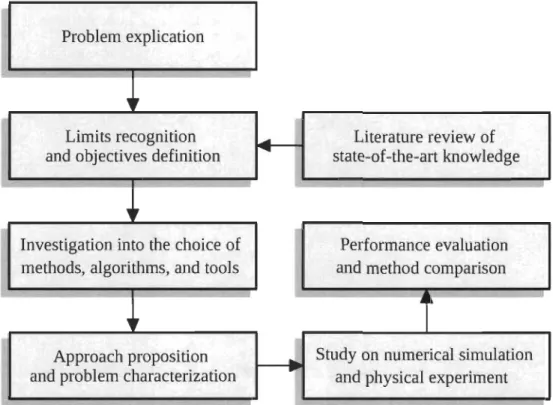

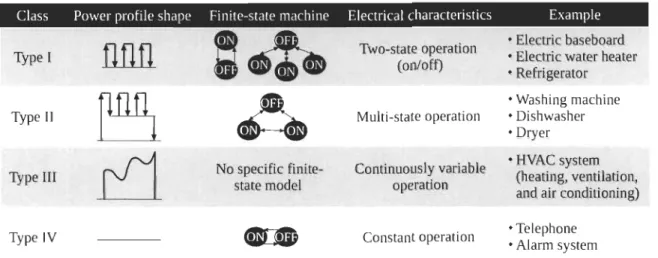
![Fig. 1. Total primary energy consumption for building in US; Key: BTU=British Thermal Unit [19]](https://thumb-eu.123doks.com/thumbv2/123doknet/14609993.732312/51.918.499.825.83.311/total-primary-energy-consumption-building-british-thermal-unit.webp)
